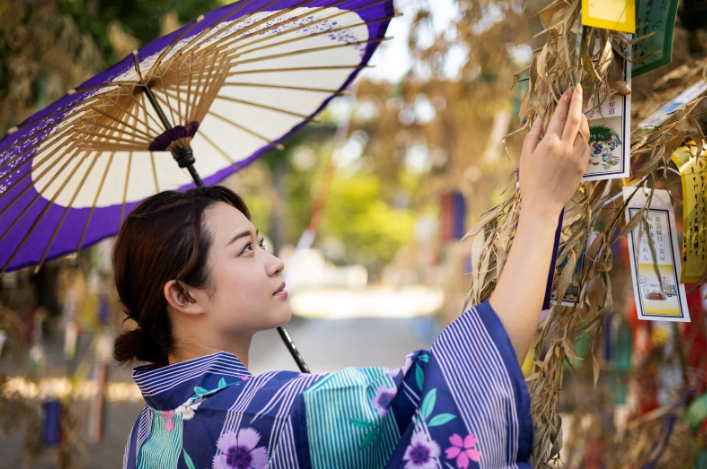Introduction
Yahatai Kodosai is an ancient festival steeped in tradition and cultural significance. Celebrated in various regions of Japan, this festival embodies the rich heritage and communal spirit of the Japanese people. In this blog post, we will explore the origins, significance, and unique aspects of Yahatai Kodosai, inviting you to immerse yourself in the magic of tradition.
The Origins of Yahatai Kodosai
Yahatai Kodosai, also known as the Eight Bridges Festival, dates back to ancient times. It is believed to have originated during the Edo period, reflecting the deep-rooted customs and religious beliefs of the time. The festival centers around the construction and procession of elaborate wooden floats, each representing a bridge, symbolizing the connection between the earthly and spiritual realms.
Key Features of Yahatai Kodosai
- Wooden Floats: The highlight of the festival is the grand wooden floats, intricately designed and decorated. These floats are constructed by local communities, showcasing their craftsmanship and creativity.
- Processions: The festival features grand processions where the wooden floats are paraded through the streets. Participants, dressed in traditional attire, accompany the floats, creating a vibrant and festive atmosphere.
- Music and Dance: Traditional music and dance performances are integral to the festival, adding to its lively and joyous ambiance.
- Rituals and Offerings: Various rituals and offerings are performed during the festival to honor deities and seek blessings for prosperity and good fortune.
Significance of Yahatai Kodosai
Yahatai Kodosai holds immense cultural and religious significance. It serves as a reminder of the community’s connection to their ancestors and deities, fostering a sense of unity and belonging. The festival also provides an opportunity for communities to showcase their cultural heritage and pass down traditions to future generations.
The Craftsmanship Behind Wooden Floats
The construction of the wooden floats is a labor-intensive process that showcases the community’s craftsmanship and dedication. Local artisans and volunteers work together to create these intricate structures, often spending months on their design and assembly. The floats are made from high-quality wood and decorated with elaborate carvings, paintings, and other embellishments. This meticulous attention to detail reflects the pride and commitment of the community to preserving their cultural heritage.
The Role of Music and Dance
Music and dance play a crucial role in Yahatai Kodosai, adding to the festival’s festive atmosphere. Traditional instruments such as taiko drums, flutes, and shamisen (a three-stringed instrument) are commonly used to create lively and rhythmic music. Dance performances, often choreographed to the music, showcase traditional Japanese dance forms and are performed by both professional dancers and community members. These performances are not only entertaining but also serve to preserve and promote traditional Japanese art forms.
Table: Key Aspects of Yahatai Kodosai
| Aspect | Description |
|---|---|
| Wooden Floats | Intricately designed floats representing bridges |
| Processions | Grand parades with participants in traditional attire |
| Music and Dance | Traditional performances enhancing the festive atmosphere |
| Rituals | Offerings and rituals to honor deities and seek blessings |
Immersive Experiences at Yahatai Kodosai
- Participate in Float Construction: Join local communities in the construction of the wooden floats, experiencing the craftsmanship and dedication involved.
- Witness the Processions: Attend the grand processions and witness the beautifully decorated floats and vibrant traditional attire.
- Enjoy Traditional Performances: Experience traditional music and dance performances that are integral to the festival’s atmosphere.
- Engage in Rituals: Participate in the rituals and offerings, gaining insight into the religious aspects of the festival.
The Spiritual Significance of Rituals and Offerings
Rituals and offerings are a fundamental aspect of Yahatai Kodosai, reflecting the deep spiritual connection between the community and their deities. These rituals often involve prayers, purification ceremonies, and symbolic offerings such as rice, sake, and other traditional items. The purpose of these rituals is to seek blessings for prosperity, good fortune, and protection from misfortune. Participating in these rituals allows attendees to connect with the spiritual essence of the festival and experience a sense of renewal and spiritual growth.
Tips for Attending Yahatai Kodosai
- Plan Ahead: Research the festival dates and plan your visit accordingly to ensure you don’t miss any key events.
- Respect Traditions: Be mindful of the customs and traditions observed during the festival, showing respect for the local culture.
- Dress Appropriately: Consider wearing traditional attire or comfortable clothing suitable for attending a cultural festival.
- Engage with Locals: Interact with the local communities to learn more about the significance of the festival and their experiences.
- Stay Hydrated and Nourished: Given the lengthy processions and crowded streets, ensure you stay hydrated and nourished by bringing water and snacks.
- Capture Memories Respectfully: While it’s tempting to take pictures, always ask for permission and avoid disrupting the festivities.
Culinary Delights at Yahatai Kodosai
No festival is complete without a feast, and Yahatai Kodosai is no exception. The festival offers a wide array of traditional Japanese foods, giving attendees a chance to indulge in culinary delights. Street vendors set up stalls offering dishes such as takoyaki (octopus balls), yakitori (grilled chicken skewers), taiyaki (fish-shaped pastries filled with sweet red bean paste), and other local delicacies. Savoring these traditional foods adds to the immersive experience of the festival, providing a taste of Japan’s rich culinary heritage.
Contributions to Cultural Preservation
Yahatai Kodosai plays a vital role in preserving and promoting Japanese culture. By actively participating in the festival, communities help keep traditional practices alive. This cultural preservation extends beyond the festival itself, influencing various aspects of daily life and ensuring that future generations continue to embrace and celebrate their heritage. The festival also attracts tourists from around the world, providing an opportunity for cultural exchange and enhancing global appreciation for Japanese traditions.
Table: Traditional Foods at Yahatai Kodosai
| Food | Description |
|---|---|
| Takoyaki | Octopus balls made of batter, filled with diced octopus, tempura scraps, pickled ginger, and green onion, topped with takoyaki sauce and bonito flakes. |
| Yakitori | Grilled chicken skewers served with a sweet and savory tare sauce. |
| Taiyaki | Fish-shaped pastries filled with sweet red bean paste, custard, chocolate, or cheese. |
| Okonomiyaki | Japanese savory pancake containing a variety of ingredients, typically cabbage, meat or seafood, and topped with okonomiyaki sauce, mayonnaise, and bonito flakes. |
The Global Appeal of Yahatai Kodosai
Yahatai Kodosai has grown in popularity beyond Japan, drawing visitors from around the globe. The festival’s vibrant and festive atmosphere, combined with its rich cultural and historical significance, makes it an attractive destination for cultural enthusiasts. International visitors have the opportunity to immerse themselves in Japanese traditions, learn about the customs, and experience the warm hospitality of the local communities. This global appeal enhances cross-cultural understanding and promotes tourism, benefiting the local economy.
Practical Information for Visitors
When planning to attend Yahatai Kodosai, consider the following practical information:
- Travel Arrangements: Book your travel and accommodation well in advance, as the festival attracts a large number of visitors.
- Local Transportation: Utilize public transportation options such as trains and buses to navigate the festival area.
- Currency and Payments: Carry sufficient cash, as some vendors may not accept credit cards.
- Language Assistance: Learn a few basic Japanese phrases or use translation apps to enhance communication with locals.
Conclusion
Yahatai Kodosai is more than just a festival; it is a celebration of tradition, culture, and community. By immersing yourself in the magic of Yahatai Kodosai, you gain a deeper appreciation for the rich heritage and communal spirit that define this ancient festival. Whether you participate in the construction of the wooden floats, witness the grand processions, or engage in traditional rituals, Yahatai Kodosai offers an unforgettable experience that connects you to the timeless traditions of Japan.
Frequently Asked Questions (FAQs)
What is Yahatai Kodosai?
Yahatai Kodosai is an ancient Japanese festival known as the Eight Bridges Festival, celebrated with wooden float processions, traditional music, and rituals.
When is Yahatai Kodosai celebrated?
The festival dates vary by region, so it’s best to research specific dates for the location you plan to visit.
What are the wooden floats?
The wooden floats are intricately designed structures representing bridges, constructed and paraded by local communities during the festival.
What is the significance of the processions?
The processions symbolize the connection between the earthly and spiritual realms and showcase the community’s craftsmanship and cultural heritage.
Can visitors participate in the festival?
Yes, visitors can participate in various aspects of the festival, including float construction, processions, and rituals.
What should I wear to Yahatai Kodosai?
Consider wearing traditional attire or comfortable clothing suitable for attending a cultural festival.
How can I engage with the local community?
Interact with locals, join in the festivities, and show respect for their customs and traditions to engage with the community.







